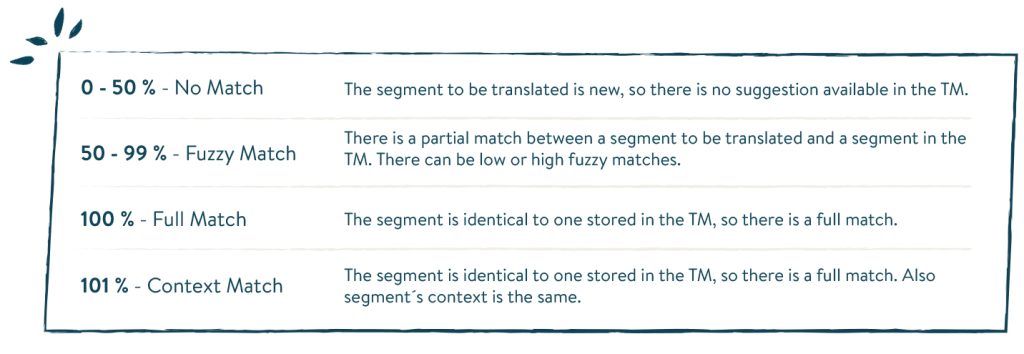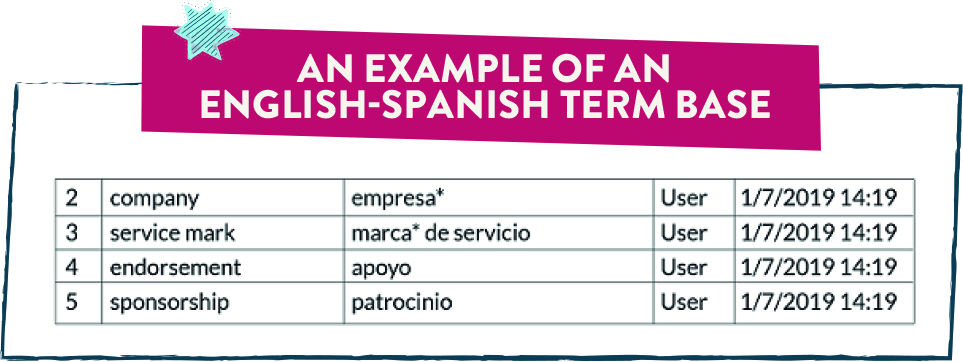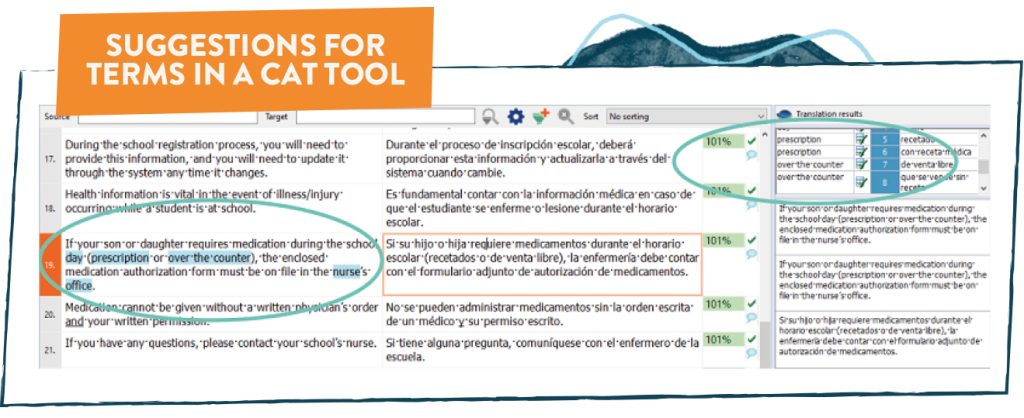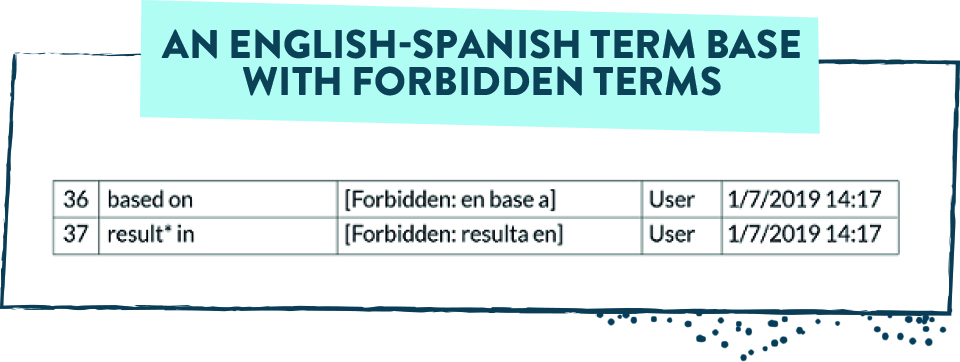Several specifications and challenges can determine a localization project, like references, term lists, a big team with a large workload or tight deadlines. Because of this, computer-assisted translation (CAT) tools are the best allies when handling translation workflows. First, they help the management team organize assignments and monitor the vendors’ progress. They also assist translators and editors with many useful features (like terminology management, spellcheck, search options, shortcuts, etc.). And lastly, they benefit quality assurance managers providing tools to revise and run tests on the project’s documents.
Hence, the value CAT tools add in each of these steps is fundamental for a smooth workflow and, as a result, high-quality deliverables. In particular, three features of translation software impact consistency, productivity and optimal terminology management. These are translation memories (TM), term bases (TB) and alignment pairs.
1. Translation memories

TMs are bilingual databases that store pairs of translated segments (source + target text). They are integrated into CAT tools, so linguists can reuse previous translations and save the new ones. First, this speeds up the process of writing. Second, it’s the basic resource for ensuring consistency within documents and projects.
There are different possible levels of matches between a segment that needs translation and the ones stored in a TM.

TMs are very valuable databases that can be shared, exported or imported in different software applications.
2. Term bases

A TB is a database containing pairs of terms (words or expressions) in two or more languages. TBs can be created or edited using the CAT tool in an ongoing project. In addition, it’s possible to create a TB by importing an existing list of terms from a bilingual or multilingual document (like an Excel sheet).

Glossaries ensure consistent management of terminology across documents and projects. Skilled use of term bases will provide multiple advantages for translation workflows, because TBs can help with:

- Forbidden or incorrect words
- Preferential expressions
- Recognizing terms despite inflection
- Providing context or conditions for a term
- Distinguishing terms according to their letter case
3. Alignment

This is a feature of CAT tools that allows importing pre-existing translations. The software automatically aligns the segments of a pair of files (the source text and its translation) to create a bilingual document. This way, linguists can have access to these translations, reuse them or store them in a TM. Therefore, the information present in the document (terminology, references) is easily accessible to the linguists working in the project, as any other CAT tool resource.
Alignment is an effective way of handling previous translations sent as reference, because it allows to import them in the tool. This way, the processing of this information and the consistency with it is ensured.









